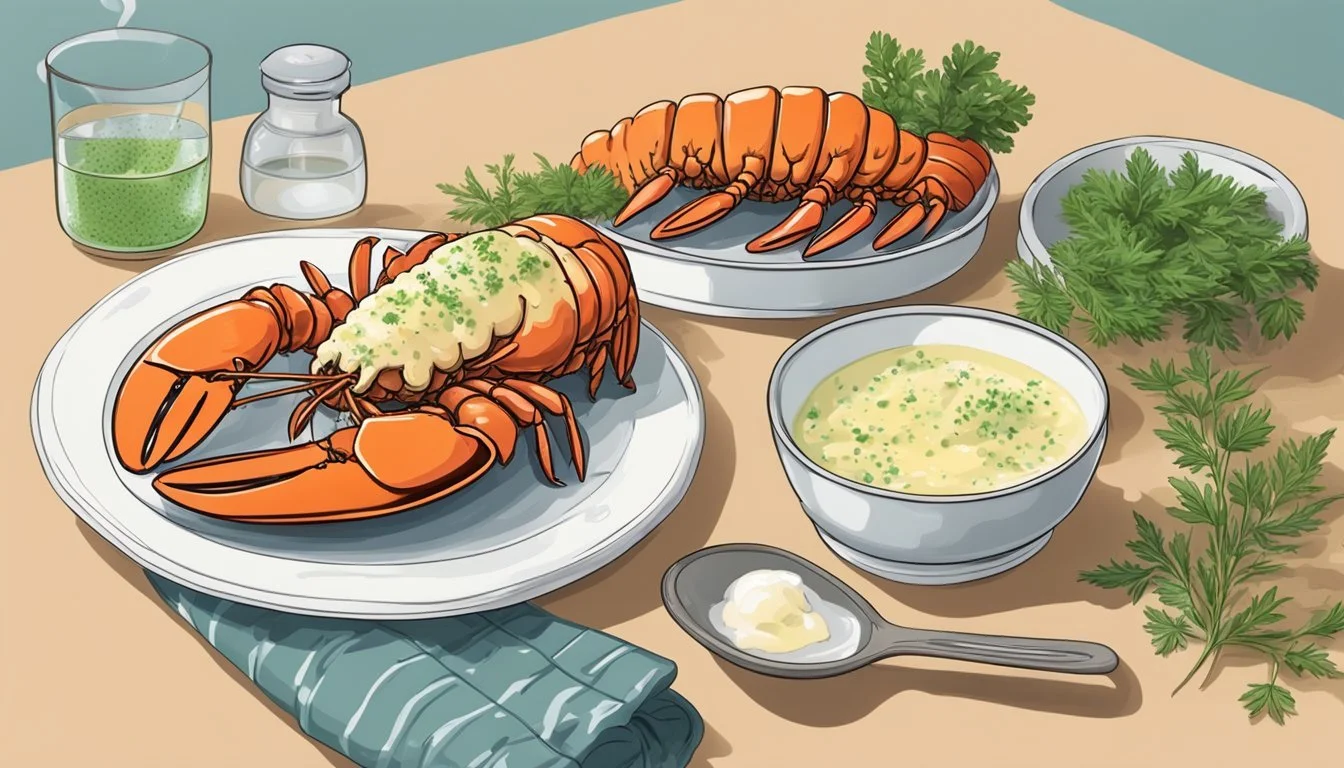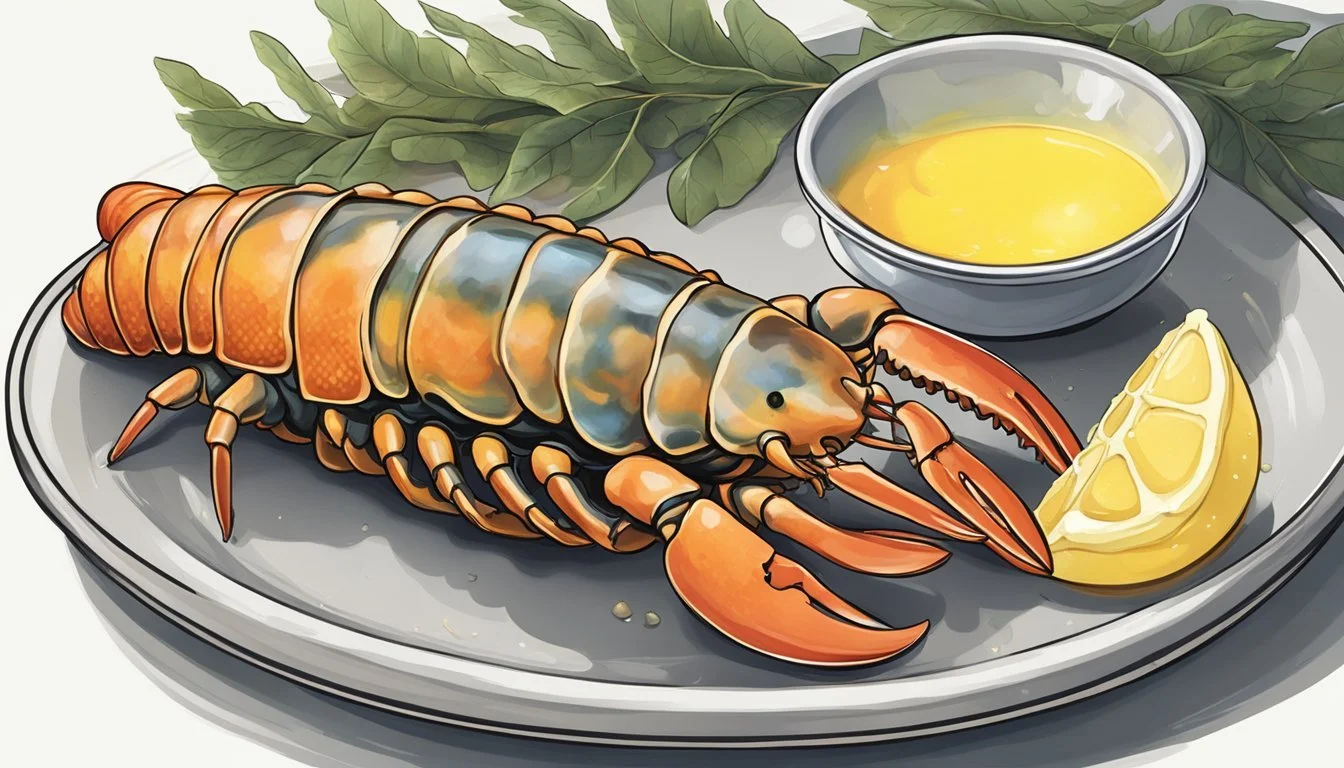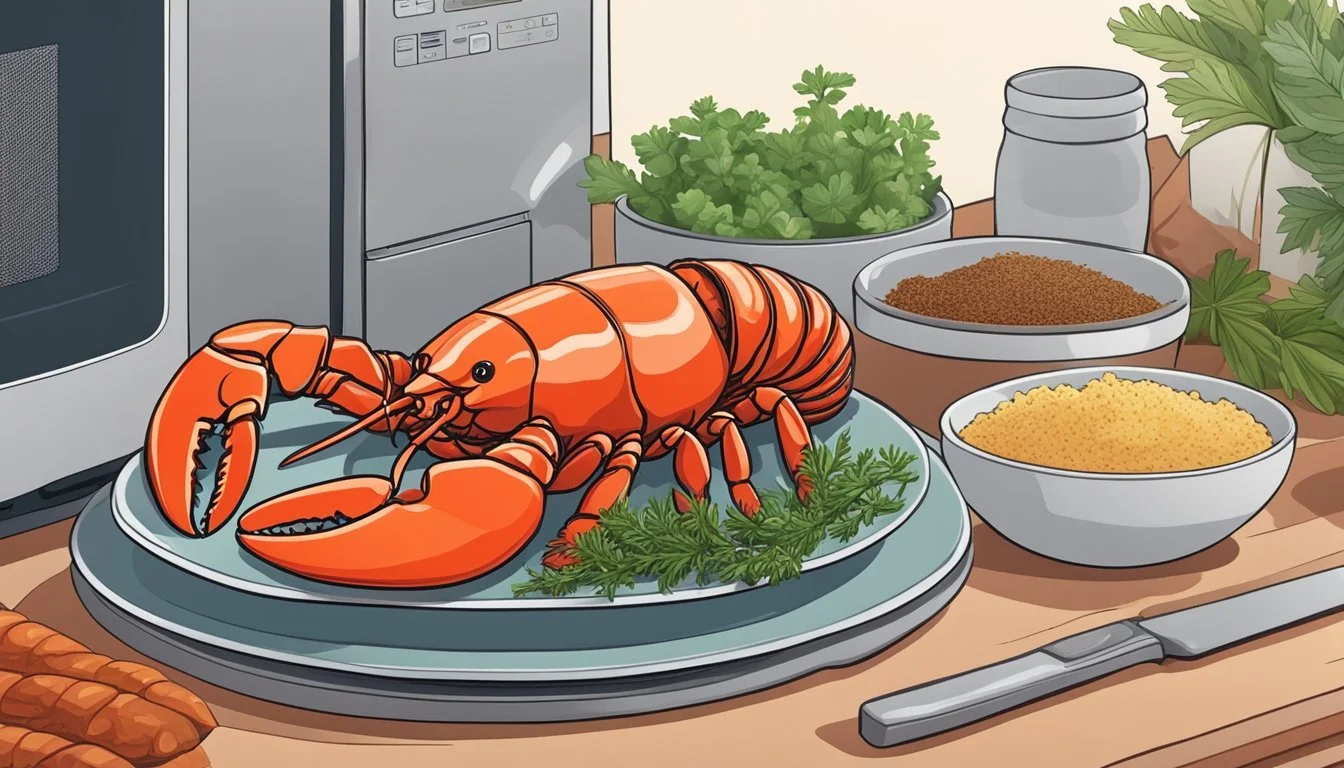Best Way to Reheat a Lobster Tail
Ensuring Tenderness Every Time
Reheating lobster tail can be an art form that preserves the delicate texture and rich flavor of this luxurious seafood. The key to success lies in using gentle methods that heat the lobster (What wine goes well with lobster?) evenly without causing it to become tough or rubbery. One of the tried and true methods is steaming, which allows heat to circulate around the lobster, warming it thoroughly while keeping it moist. This is particularly effective when water or a flavorful broth is used to create steam, infusing the lobster with moisture and preventing it from drying out.
Another technique involves the oven, where the lobster tail is warmed at a moderate temperature to ensure that it heats through without overcooking. It helps to cover the tail with foil to keep the steam contained, and adding a pat of butter (how long does butter last?) or a splash of broth can enhance the flavor while maintaining the lobster's succulence. Keeping the temperature controlled and the lobster covered are crucial to avoid any toughness in the meat.
The butter method should not be overlooked either. Incorporating butter not only introduces additional richness but can also help to lock in the lobster's natural juices. Whether steaming or using the oven, the addition of butter creates a luxurious mouthfeel and can bring out the inherent sweetness of the lobster meat. Whichever method chosen, the aim is to gently reheat the lobster to retain its tender texture and sumptuous taste.
Understanding Lobster Reheating Basics
When reheating lobster tail, the application of gentle heat is crucial to preserve its succulent texture and ensure the meat remains safe to consume. Proper reheating technique ensures the lobster tail remains tender and avoids unpleasant toughness.
Significance of Gentle Heat
Using gentle heat to reheat lobster tails is vital. Lobster meat is composed of delicate proteins that can become tough if exposed to high temperatures. Therefore, it's important to reheat lobster at a low to moderate temperature. Typically, setting the oven to 350°F (175°C) provides a balance between warming the meat effectively and maintaining its tenderness.
Avoiding Toughness in Lobster Meat
To prevent the lobster tail from becoming too tough:
Preheat the oven to 350°F (175°C).
Wrap the lobster tail in foil to create an environment that allows for even reheating without direct exposure to intense heat.
Add a small amount of liquid (water or broth) or butter to the foil wrap, which will generate steam and keep the moisture locked in.
Reheating time is another critical factor—the lobster tail should be heated just until it's warm throughout. Overheating can cause the proteins to contract and toughen.
Temperature and Safety Considerations
The goal is to reach an internal temperature of the lobster meat that is both safe for consumption and optimal for maintaining its quality. For safety, the lobster should be reheated to an internal temperature of 165°F (74°C), which is sufficient to eliminate potential bacteria. A food thermometer can be used to check the temperature without interrupting the reheating process.
By reheating at a regulated temperature and for the proper amount of time, one can ensure the lobster tail remains a delicious and safe meal.
Preparatory Steps Before Reheating
Before reheating a leftover lobster tail, one must take certain prep steps to preserve its succulence and avoid toughness. The process begins with proper thawing and assessing the freshness of the lobster.
Thawing Lobster Tails
Lobster tails should be moved from the freezer to the refrigerator a day prior to reheating, allowing them to thaw gradually. The tails will thaw in about 24 hours, depending on their size. It is critical to avoid using a microwave for thawing, as this could lead to partial cooking and inconsistencies in texture.
Checking Lobster Freshness
The tail should show no signs of discoloration or unpleasant odors, which could indicate spoilage. A fresh lobster tail will have a firm texture and a slightly sweet scent. Use these indicators to ensure your leftover lobster tail is still prime for consumption before reheating.
Reheating Lobster Tails in the Oven
To reheat lobster tails in the oven without them becoming tough, one needs to carefully manage the temperature and environment within the oven. The method involves wrapping the tails in foil to preserve moisture and finishing with butter or seasonings for added flavor.
Oven Method Detailing
One should preheat the oven to 350°F (175°C) to ensure a gentle and even reheating process. A baking dish or a baking sheet can be used to hold the lobster tails. It is crucial to heat them just until they are warm to touch, usually for about 10 minutes, to avoid overcooking.
Using Foil to Retain Moisture
Wrapping the lobster tails in aluminum foil is essential to prevent them from drying out. One should:
Lay a piece of foil flat on the counter.
Place the lobster tail in the center, belly side up.
Gently crimp the foil around the lobster, sealing it while leaving enough room for air circulation inside.
Finalizing with Butter or Seasonings
Before sealing the foil, it's advisable to add a pat of butter over the lobster tail, as this introduces additional moisture and flavor. Alternatively, a person can sprinkle their choice of seasonings to enhance the taste. After the lobster tails are reheated, one should carefully unwrap the foil and serve immediately.
Stovetop Reheating Techniques
When it comes to reheating lobster tails on the stovetop, one can use either a skillet or a steaming method to preserve the lobster's tenderness and flavor. It's essential to manage heat carefully and incorporate additional flavors that complement the lobster.
Skillet Method
The skillet method utilizes direct heat and provides a quick way to reheat lobster tails. One should heat the skillet on medium heat and add a mixture of butter and olive oil. The butter enriches the lobster's flavor while the olive oil prevents burning. Place the lobster tail meat-side down in the skillet, sprinkling with salt and pepper for seasoning, and heat for about 2 minutes. Then, flip the tail over, cover the skillet, and let it warm through for an additional 2-3 minutes, taking care not to overcook.
Steaming Over Stock
Steaming lobster tails over a flavorful liquid such as chicken or vegetable stock can infuse the meat with subtle, yet rich flavors. Fill a pot with an inch of broth or stock and bring it to a gentle simmer. The lobster tail should be placed in a steamer insert above the stock, shell-side down. Cover the pot and allow the tail to steam for roughly 4-6 minutes, checking the internal temperature to ensure it just hits the mark of being warmed through without becoming tough.
Alternative Reheating Methods
When reheating lobster tails, the key is to maintain their moisture and tenderness. The following alternative methods can help achieve a nicely reheated lobster tail without it becoming tough.
Using a Microwave
Reheating lobster tails in the microwave is quick and convenient. The user should lightly dampen a paper towel, wrap it around the tail, and place it on a microwave-safe dish. It's crucial to heat on high in short intervals of 1-2 minutes, checking frequently to avoid overcooking.
Grilling Lobster Tails
Grilling can infuse lobster tails with a smoky flavor characteristic of outdoor cooking. Before grilling, it is best to brush the lobster tails with butter to keep them moist. Place the tails on a preheated grill and cover, reheating for a few minutes on each side.
Steaming in a Steamer Basket
Steaming lobster tails allows them to heat evenly without losing their natural juices. Place the tails in a steamer basket over boiling water, ensuring that the pot is covered tightly. Typically, steaming takes 4-6 minutes, but users should check the internal temperature to ensure it reaches 140°F for optimal tenderness.
Enhancing Flavor After Reheating
Once lobster has been reheated, boosting its flavor ensures a more enjoyable eating experience. Optimal use of ingredients like lemon and butter can dramatically enhance the flavor profile of the lobster.
Finishing Touches with Lemon and Butter
Adding lemon and butter to lobster after reheating can invigorate the meat with both moisture and taste. Lemon juice brings a fresh, zesty profile that accentuates the sweet flavors of lobster. One should drizzle freshly squeezed lemon juice over the lobster tail to elevate its taste. Incorporating butter, especially when melted with a hint of garlic, can infuse the lobster with a rich, savory depth. This combination balances the citrus notes with a creamy texture and lush flavor.
Pairing with Complementary Sides
Lobster rolls and salads serve as excellent companions to lobster tails, completing the dining experience. A homemade lobster roll can integrate the reheated tail meat with mayonnaise, further lemon juice, and bits of celery for crunch, all nestled in a toasted, buttery bun. A fresh green salad with a citrus vinaigrette dressing can contrast the lobster's richness and refresh the palate between bites. BorderSide dishes should be chosen to complement, not overpower, the delicate lobster flavor.
Serving and Presentation Tips
Proper serving and presentation of a reheated lobster tail can transform it from a simple seafood dish to an elegant delicacy. It's important to consider the visual appeal as well as the enhancement of flavors through the right accompaniments and garnishes.
Plating Lobster After Reheating
When plating lobster tails, one should place them shell-side down to showcase the succulent meat. They can either neatly arrange the lobster on individual plates or serve it on a shared platter for a family-style presentation. Using warm plates helps maintain the temperature of the lobster, ensuring it remains delightful to the palate from the first to the last bite.
Accompanying Sauces and Seasonings
Sauce Type Serving Suggestion Drawn Butter A small ramekin per person Lemon Butter Drizzle lightly or serve on the side Herb Infused Sauces Sparingly spoon over or alongside the meat
For seasonings, a light sprinkle of sea salt and cracked black pepper enhances natural flavors without overwhelming the lobster. A sauté of garlic and herbs can also complement the taste and aroma.
Garnishing for Visual Appeal
Adding a sprig of fresh parsley or dill atop the lobster tail brings freshness and color to the dish. A slice of lemon on the side of the plate adds both aesthetic appeal and the option for guests to add a citrus zing. The key is subtlety, as lavish garnishes can overshadow the star of the dish—the lobster itself.
Food Safety and Storage
Ensuring the safety and quality of leftover lobster tails begins with proper cooling and storage. One must avoid cold spots and bacteria growth that could lead to illness.
Proper Cooling and Storing Leftovers
Leftovers should be cooled to room temperature promptly after the meal—generally within two hours—to prevent bacterial growth, as recommended by the FDA. They should then be stored in a refrigerator at or below 40°F (4°C). If possible, wrap the lobster tail in paper towels to absorb any excess moisture, which might otherwise contribute to a soggy texture upon reheating. The lobster tail should be placed in an airtight container to prevent the meat from drying out and absorbing any off-flavors from other foods in the refrigerator.
Recognizing Signs of Spoilage
One should be vigilant for signs of spoilage before consuming leftover lobster. A bad odor, slimy consistency, or discoloration are tell-tale signs that the lobster is no longer safe to eat and should be discarded. Additionally, any leftovers that have been stored for more than three days in the refrigerator are at increased risk of harboring harmful bacteria, and one should exercise caution or choose to dispose of the lobster to prevent potential foodborne illness.
Creative Ideas for Leftover Lobster
Leftover lobster offers a versatile ingredient for various culinary exploits. Whether one is enhancing existing dishes with its rich flavor or using it as a base for future creations, the potential is vast.
Incorporating Into New Dishes
One may rejuvenate leftover lobster by integrating it into new dishes. They might consider the following gourmet transformations:
Lobster Mac and Cheese: Elevate the classic comfort dish by adding chunks of lobster meat.
Lobster Salad: Combine lobster with fresh greens, avocado, and citrus dressing for a refreshing meal.
Lobster Rolls: Heap succulent pieces of lobster onto buttered, toasted rolls for an instant seaside classic.
Lobster Pizza: A white garlic sauce base topped with lobster meat, a sprinkle of cheese, and herbs forms an indulgent treat.
By incorporating leftover lobster into these dishes, one maximizes its culinary potential and enjoys luxurious meals.
Making Lobster Stock for Future Use
Creating lobster stock is a practical method to harness the rich flavors of leftover lobster. One should follow these steps:
Collect Lobster Shells: After enjoying the lobster meat, preserve the shells for the stock base.
Simmer with Aromatics: In a stockpot, simmer the shells with items such as onions, carrots, celery, and fresh herbs.
Strain and Store: Once the stock has developed a deep flavor, strain it to remove solids and store it in the refrigerator or freezer for future use.
This homemade stock serves as a foundation for exquisite seafood soups, risottos, or sauces, transforming simple recipes into gourmet experiences.
Troubleshooting Common Reheating Issues
When reheating lobster tails, one may encounter issues such as cold spots and dryness, which can affect texture and overall enjoyment. It is essential to apply proper techniques to ensure the tail is evenly warmed while maintaining its succulent moisture.
Handling Cold Spots
Cold spots occur when heat is unevenly distributed throughout the lobster tail during the reheating process. To prevent this:
Ensure Even Heating: Reheat at a moderate temperature; for instance, use a 350°F oven setting.
Frequent Checks: Periodically check the lobster tail for uniform warmth, using a thermometer to test different sections.
Heat Redistribution: If using a microwave, place a damp paper towel over the lobster tail to help distribute the heat more evenly and prevent the microwave from creating cold spots.
Maintaining Moisture and Preventing Dryness
The challenge with reheating leftover lobster is retaining the tail's inherent moisture while avoiding a rubbery texture.
Moisture Lock: Introduce a pat of butter on top of the lobster tail or a splash of broth in the baking dish if reheating in the oven.
Cover with Foil: Wrapping the lobster tail in foil can create a steamy environment, preserving moisture within.
Avoid Overheating: Heat just until the lobster tail becomes adequately warm. Overheating leads to dryness and can toughen the meat.
By addressing these common issues in the reheating process, one can enjoy a deliciously moist and tender reheated lobster tail.
Conclusion
When reheating lobster tails, one must ensure that the meat retains its moisture to avoid toughness. The gentle approaches of reheating, such as steaming or using an oven, are preferred methods. Steaming allows the lobster tail to heat through while maintaining its succulence. If using an oven, placing the lobster in a baking dish, covering it with butter and aromatics, and wrapping it in foil helps to lock in moisture and flavor.
One should always avoid the microwave for reheating lobster tails, as it can quickly lead to overcooked and rubbery meat. Reheating in small increments and checking the lobster frequently can prevent this overcooking. For those short on time, the microwave might still be an option, but the lobster should be covered and reheated at a low power setting, in brief intervals, to ensure even heating without drying it out.
To conclude, reheating lobster tails successfully requires a careful balance of heat and moisture. By utilizing butter, aromatics, and proper techniques, such as steaming or gentle oven warming, the lobster can be brought back to a delectable temperature while preserving its tender texture. Attention to detail during the reheating process will result in a lobster tail that is nearly as enjoyable as when it was freshly cooked.









